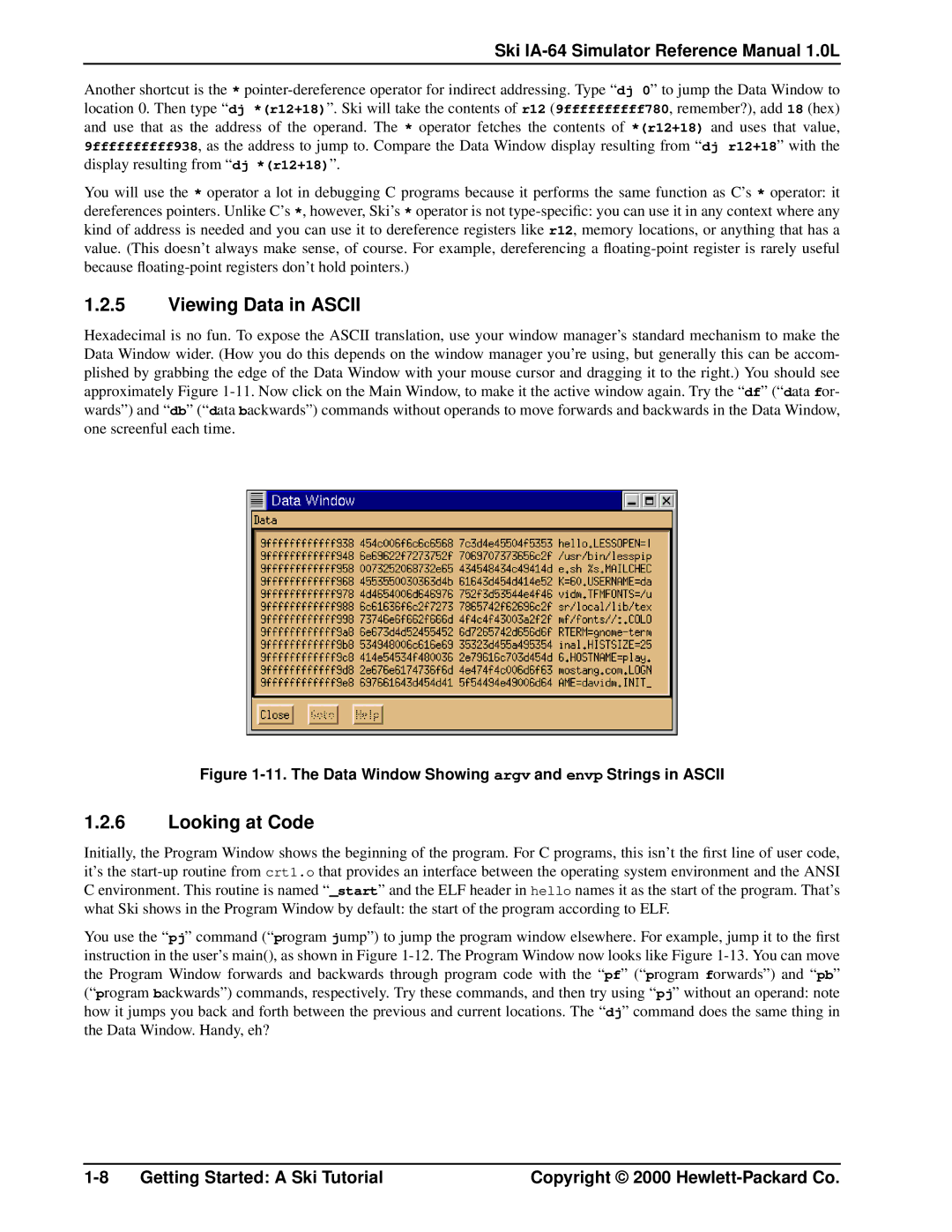Ski IA-64 Simulator Reference Manual 1.0L
Another shortcut is the * pointer-dereference operator for indirect addressing. Type “ dj 0” to jump the Data Window to location 0. Then type “ dj *(r12+18)”. Ski will take the contents of r12 (9ffffffffff780, remember?), add 18 (hex) and use that as the address of the operand. The * operator fetches the contents of *(r12+18) and uses that value, 9ffffffffff938, as the address to jump to. Compare the Data Window display resulting from “ dj r12+18” with the display resulting from “ dj *(r12+18)”.
You will use the * operator a lot in debugging C programs because it performs the same function as C’s * operator: it
dereferences pointers. Unlike C’s *, however, Ski’s * operator is not type-specific: you can use it in any context where any kind of address is needed and you can use it to dereference registers like r12, memory locations, or anything that has a value. (This doesn’t always make sense, of course. For example, dereferencing a floating-point register is rarely useful because floating-point registers don’t hold pointers.)
1.2.5Viewing Data in ASCII
Hexadecimal is no fun. To expose the ASCII translation, use your window manager’s standard mechanism to make the Data Window wider. (How you do this depends on the window manager you’re using, but generally this can be accom- plished by grabbing the edge of the Data Window with your mouse cursor and dragging it to the right.) You should see approximately Figure 1-11.Now click on the Main Window, to make it the active window again. Try the “ df” (“ data for- wards”) and “ db” (“ data backwards”) commands without operands to move forwards and backwards in the Data Window, one screenful each time.
Figure 1-11. The Data Window Showing argv and envp Strings in ASCII
1.2.6Looking at Code
Initially, the Program Window shows the beginning of the program. For C programs, this isn’t the first line of user code, it’s the start-up routine from crt1.o that provides an interface between the operating system environment and the ANSI C environment. This routine is named “ _start” and the ELF header in hello names it as the start of the program. That’s what Ski shows in the Program Window by default: the start of the program according to ELF.
You use the “ pj” command (“ program jump”) to jump the program window elsewhere. For example, jump it to the first instruction in the user’s main(), as shown in Figure 1-12.The Program Window now looks like Figure 1-13.You can move the Program Window forwards and backwards through program code with the “ pf” (“ program forwards”) and “ pb” (“ program backwards”) commands, respectively. Try these commands, and then try using “ pj” without an operand: note how it jumps you back and forth between the previous and current locations. The “ dj” command does the same thing in the Data Window. Handy, eh?

